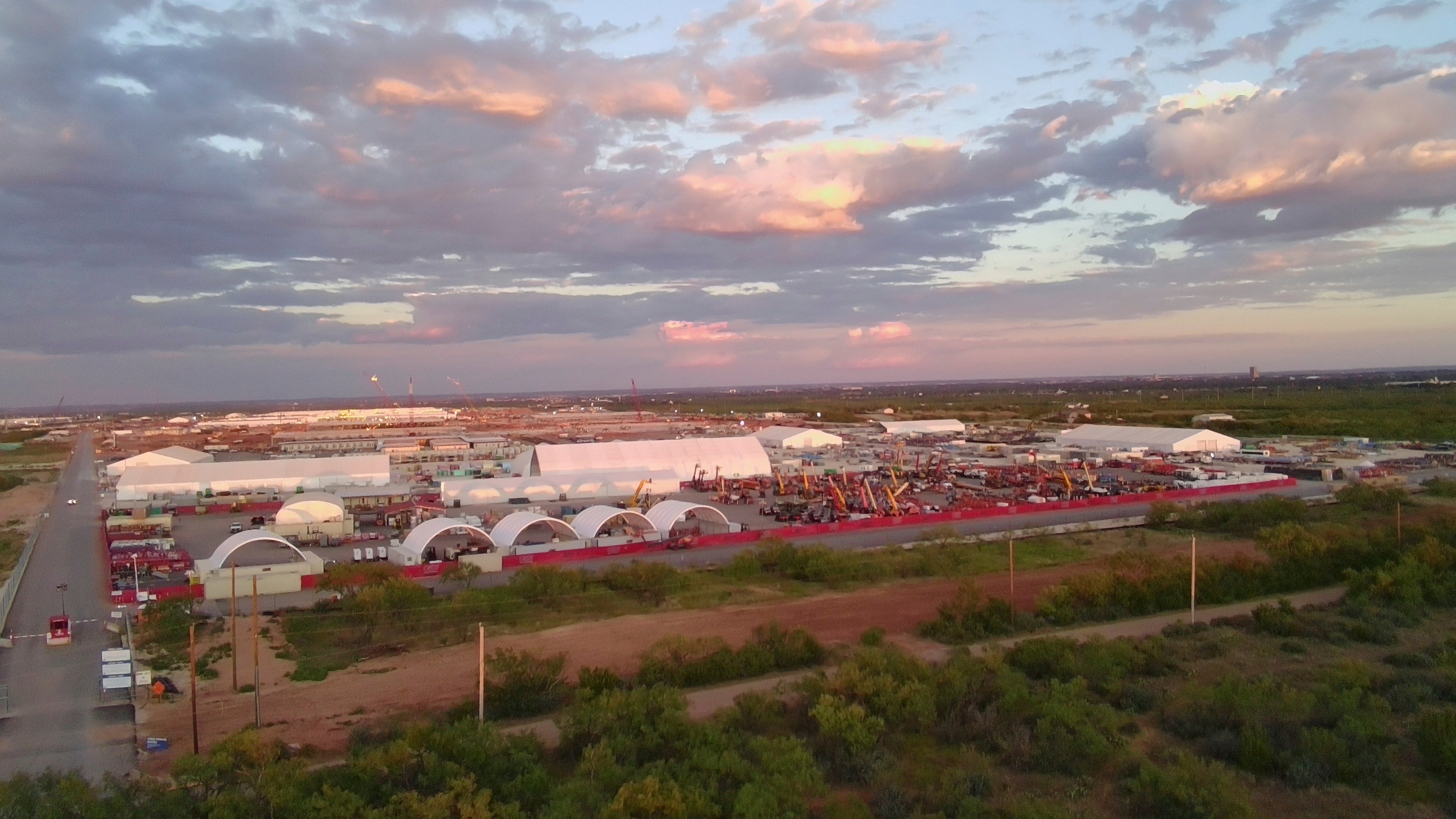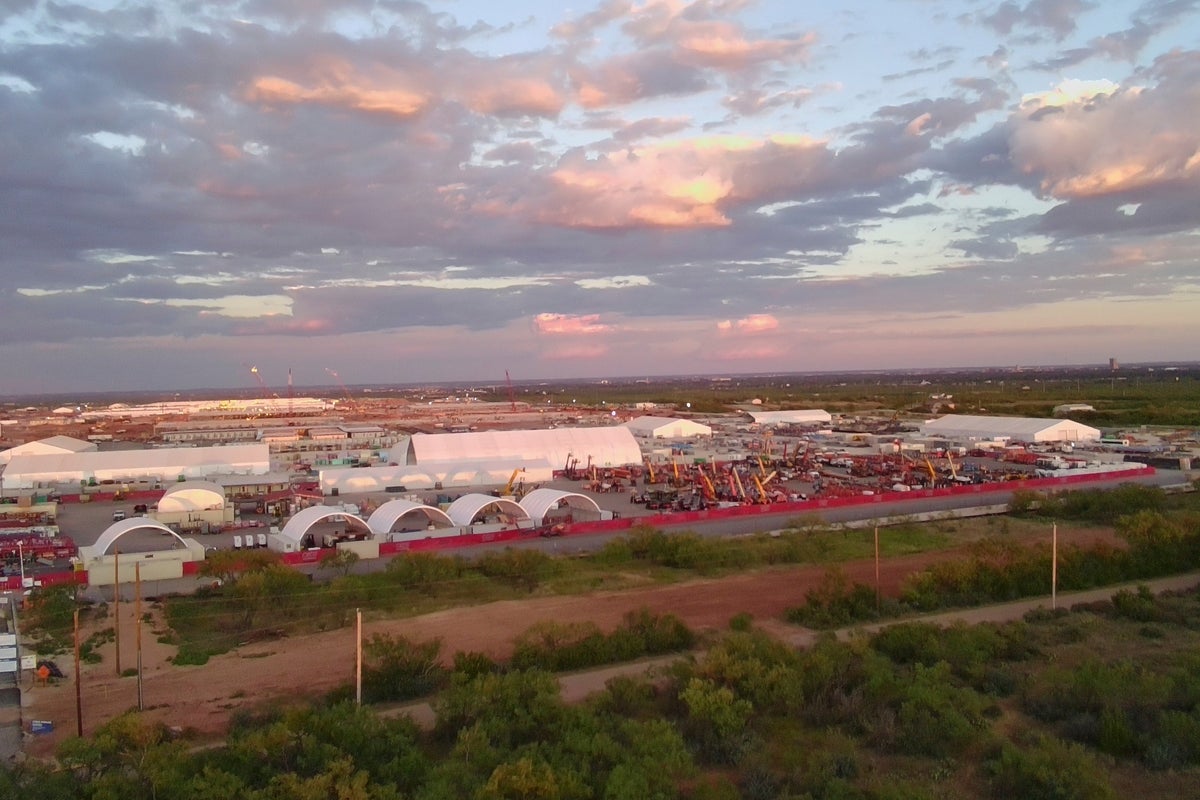- News
- World
- Americas
Electricity demand is growing faster than the resources being added to the grid, according to the report
Isabel Keanein New York Monday 24 November 2025 19:51 GMTComments open image in galleryThe push for AI may leave some Americans in the dark this winter, as areas near AI data centers face increased risk of power outages, according to a report (Copyright 2025 The Associated Press. All rights reserved.)
open image in galleryThe push for AI may leave some Americans in the dark this winter, as areas near AI data centers face increased risk of power outages, according to a report (Copyright 2025 The Associated Press. All rights reserved.)
The latest headlines from our reporters across the US sent straight to your inbox each weekday
Your briefing on the latest headlines from across the US
Your briefing on the latest headlines from across the US
 Email*SIGN UP
Email*SIGN UPI would like to be emailed about offers, events and updates from The Independent. Read our Privacy notice
The push for artificial intelligence may leave some Americans in the dark this winter, as areas near the data centers used to power AI face an increased risk of outages amidst winter storms, according to reports.
“Winter electricity demand is rising at the fastest rate in recent years, particularly in areas where data center development is occurring,” the North American Electric Reliability Corporation, or NERC, warned in its 2025-2026 Winter Reliability Assessment.
Data farms, or hubs for digital infrastructure necessary to process data used to run websites, apps and other Internet applications, have been rapidly popping up all across America as the demand for AI grows.
While resources across the country are adequate for normal winter weather, any prolonged periods of cold “could result in electricity supply shortfalls,” as electricity demand has grown by 20 gigawatts since last winter, NERC said in a statement.
“Electricity demand continues to grow faster than the resources being added to the grid, especially during the most extreme winter conditions where actual demand can topple forecasts by as much as 25%,” as seen in February 2021 when Texas’ power grid failed for days amidst extreme winter weather, according to John Moura, NERC’s director of reliability assessments and performance analysis.
 open image in galleryBig Tech-Energy Demand (Copyright 2025 The Associated Press. All rights reserved.)
open image in galleryBig Tech-Energy Demand (Copyright 2025 The Associated Press. All rights reserved.)Even though the U.S. was assessed as having adequate resources to handle regular winter conditions, some parts of the country may be more at risk of losing electricity this winter.
The grids in the northeastern and northwestern U.S., including Tennessee, South Carolina, Texas and Oklahoma, may be more vulnerable, the Detroit Free Press reported.
"Strong load growth from new data centers and other large industrial end users is driving higher winter electricity demand forecasts and contributing to continued risk of supply shortfalls," the report says for the Texas grid region known as Texas Reliability Entity and the Electricity Reliability Council of Texas, or RE-ERCOT.
“Data centers are altering the daily load shape due to their round-the-clock operating pattern, lengthening peak demand periods,” the report says.
Additional battery storage and demand-response resources may help mitigate these issues, the study found, but it may also fall short “for extended periods of high loads, such as a severe multi-day storm like Winter Storm Uri,” which was the devastating February 2021 storm to hit Texas.
Evidence from the past two winters shows improvement in the use of natural gas to power generators, as opposed to coal-fired power generation. However, natural gas isn’t as readily available during the colder winter months.
“Natural gas is an essential fuel for electricity generation in winter,” said Mark Olson, NERC’s manager of reliability assessment.
“Although we are seeing evidence of improved performance, grid operators in areas that rely on single-fuel gas-fired generators are exposed to unanticipated generator loss during cold snaps when gas supply interruptions are more prevalent,” Olson added.
With the report, NERC called on grid operators to recognize load needs in extreme cold weather events to enhance their winter planning processes ahead of time. There are more than 5,200 massive data farming facilities are located across America. Given the rapid growth of digital technology and AI, there has been an even greater demand for even more to be developed.
Tech companies like OpenAI, Oracle, Google and Amazon are racing to build more farms. While the centers can promise jobs and local investment, they also require millions of gallons of fresh water to operate, use fossil fuel power and create a large amount of noise.
The farms also rely heavily on an area’s water and energy infrastructure – and approximately 56 percent of their power is from fossil fuel sources, according to a 2024 Harvard-led study.
Researchers also found that data farms emit 105 million metric tons of carbon emissions, approximately 2 percent of all U.S. emissions.
In the past eight years, employment in the data farm industry grew by more than 50 percent. Data farms contributed $355 billion to the economy in 2017, ballooning to $727B in 2023 - a 105 percent increase.
More about
AIareasAmericansartificial intelligenceWinter Storm UriAmericanatural gasJoin our commenting forum
Join thought-provoking conversations, follow other Independent readers and see their replies
Comments


